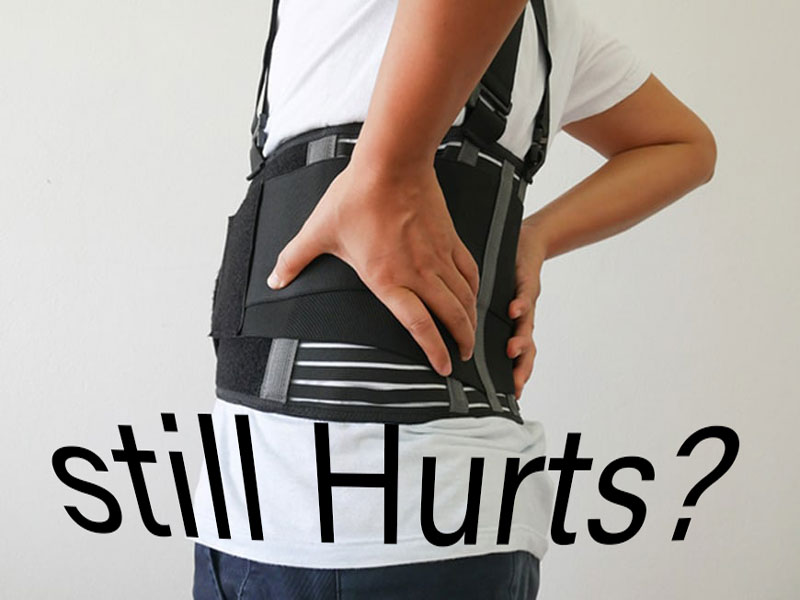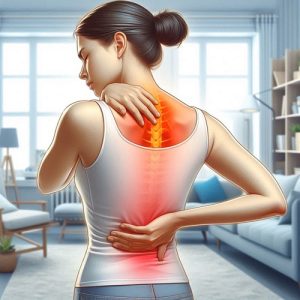The implications of choosing low-quality materials from both the perspective of a therapist and a patient
First, let’s take a closer look at LSO Orthoisis to understand the concepts of this assistive device.
LSO stands for “Lumbar Sacral Orthosis,” which is a type of medical device or orthopedic brace designed to provide support and immobilization to the lumbar (lower back) and sacral (pelvic) regions of the spine. LSO orthoses are typically used to help manage various spinal conditions and injuries, offering stability and support to the lower back and pelvis.
LSO orthoses are beneficial for a wide range of individuals, including:
- Patients with Lower Back Pain: LSO orthoses can be prescribed to individuals experiencing lower back pain due to conditions such as muscle strains, herniated discs, or osteoarthritis. The orthosis helps stabilize the lower back, reduce pain, and promote healing.
- Post-Surgery Patients: After spinal surgery, patients often need support during the recovery period. LSO orthoses can restrict excessive movement, reducing the risk of complications and aiding in the healing process.
- Individuals with Lumbar Spinal Conditions: People with lumbar spinal conditions like spondylolisthesis, lumbar stenosis, or degenerative disc disease can benefit from LSO orthoses. These devices help manage pain and provide the necessary support for day-to-day activities.
- Athletes: Athletes who participate in sports or activities that place additional stress on the lower back may use LSO orthoses to prevent injuries, provide support, and enhance performance. These orthoses are often adjustable to accommodate athletic movements.
- Patients with Sacral Injuries: Individuals with sacral fractures or other sacral injuries may require the support and stability offered by LSO orthoses. These devices immobilize the sacral area to facilitate healing.
- Patients with Scoliosis: LSO orthoses can sometimes be used to help manage scoliosis by providing additional support and helping maintain a more aligned posture.
- Rehabilitation Patients: Patients undergoing rehabilitation for various spinal conditions or injuries may benefit from LSO orthoses to assist in their recovery and enhance mobility.
- Elderly Individuals: LSO orthoses can provide much-needed support for elderly individuals dealing with age-related degeneration of the lower spine. They can aid in maintaining mobility and independence.
It’s important to note that LSO orthoses are typically prescribed and fitted by healthcare professionals, such as orthopedic specialists or physical therapists, based on the patient’s specific needs and condition. Proper diagnosis and consultation with a healthcare provider are essential to determine whether an LSO orthosis is suitable for a particular individual and to ensure the correct fit and usage for optimal benefit. Thus, knowing the standards for LSOs is important.
High-quality LSO (Lumbar Sacral Orthosis) products must meet several standards and criteria to ensure their effectiveness, safety, and comfort. These standards help guarantee that the orthoses perform as intended and provide the best possible support for individuals with lumbar and sacral spinal conditions. Here are some key standards and criteria for high-quality LSO products:
- Materials and Construction:
- Durable Materials: LSO orthoses should be constructed from durable materials, typically rigid plastic for the support structure and high-quality neoprene or other soft materials for the outer layer.
- Quality Stitching and Seams: Stitching and seams on the orthosis should be well-crafted and reinforced to prevent wear and tear over time.
- Customization and Fit:
- Individualized Fit: High-quality LSO orthoses should be customizable to provide an individualized fit, ensuring that they are comfortable and provide the necessary support.
- Adjustable Straps and Closures: The orthosis should have adjustable straps, closures, or fasteners to allow for precise fitting and ease of use.
- Comfort and Breathability:
- Soft and Comfortable Inner Lining: The inner lining should be soft and comfortable to minimize skin irritation and provide a pleasant wearing experience.
- Breathability: LSO orthoses should be designed with materials that are breathable to prevent excessive sweating and discomfort during extended use.
- Rigid Support:
- Sturdy Support Structure: The rigid support component of the orthosis should be strong and designed to maintain proper spinal alignment and restrict excessive movement in the lumbar and sacral areas.
- Safety and Compliance:
- Compliance with Medical Standards: LSO products should comply with medical and safety standards to ensure they meet healthcare regulations and are safe for patients to use.
- Adjustable Support: The orthosis should allow healthcare professionals to adjust the level of support according to the patient’s needs.
- Versatility:
- Adaptability: High-quality LSO orthoses should be adaptable to a variety of lifestyles and activities, including sports, daily routines, and recovery periods.
- Moisture Management:
- Moisture-Wicking Properties: Neoprene or other soft materials should have moisture-wicking properties to manage sweat and maintain a dry, comfortable environment for the patient.
- Ease of Use:
- User-Friendly Design: The orthosis should be designed for ease of use, allowing patients to put it on and take it off with minimal hassle.
- Durability:
- Longevity: High-quality LSO products should be constructed to last, providing reliable support over an extended period.
- Clinical Recommendations:
- Prescribed by Healthcare Professionals: LSO orthoses should be prescribed and fitted by healthcare professionals, ensuring that they meet the specific needs of each patient and their spinal condition.
-
Follow-up and Support:
- Regular Follow-ups: Patients using LSO orthoses should have regular follow-up appointments with healthcare providers to monitor progress, ensure proper use, and make any necessary adjustments.
The two perspectives of purchase
Now that we are aware of the established standards, we can address the implications of purchasing a low-quality LSO (Lumbosacral Orthosis) by examining the impact it may have on both the patient and the therapist’s professional practices.
From the Therapist’s Perspective: Opting for low-quality materials in an orthosis can compromise the patient’s well-being and hinder their recovery. It can result in reduced structural integrity and support, making the orthosis less effective in addressing the patient’s specific spinal condition. Furthermore, low-quality materials may cause discomfort, skin irritation, and an improper fit, which can lead to non-compliance with wearing the orthosis as prescribed. This can significantly slow down the healing process and impede the patient’s overall progress, which is a cause for concern for therapists aiming to provide the best care possible.
From the Patient’s Perspective: Choosing an orthosis made from low-quality materials can have detrimental consequences for the patient. The orthosis may not provide the necessary support and immobilization, leading to prolonged discomfort and pain. It can result in skin issues, such as irritation and chafing, making the orthosis unpleasant to wear. Additionally, low-quality materials may not be breathable, causing excessive sweating and discomfort during daily activities. Patients may also experience a lack of confidence in the orthosis, which can impact their mental and emotional well-being. In essence, choosing subpar materials in an orthosis can negatively affect the patient’s comfort, mobility, and overall quality of life.



